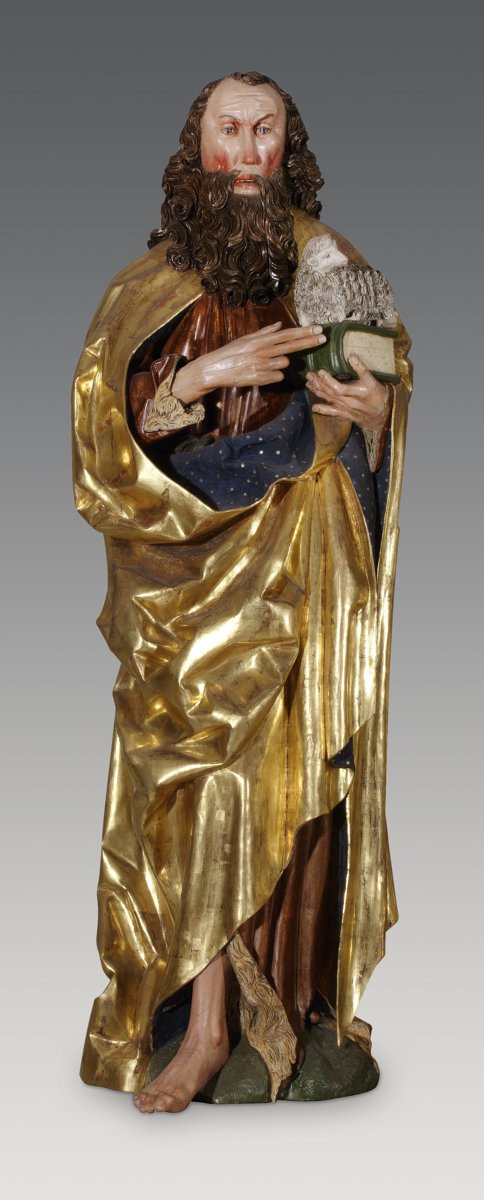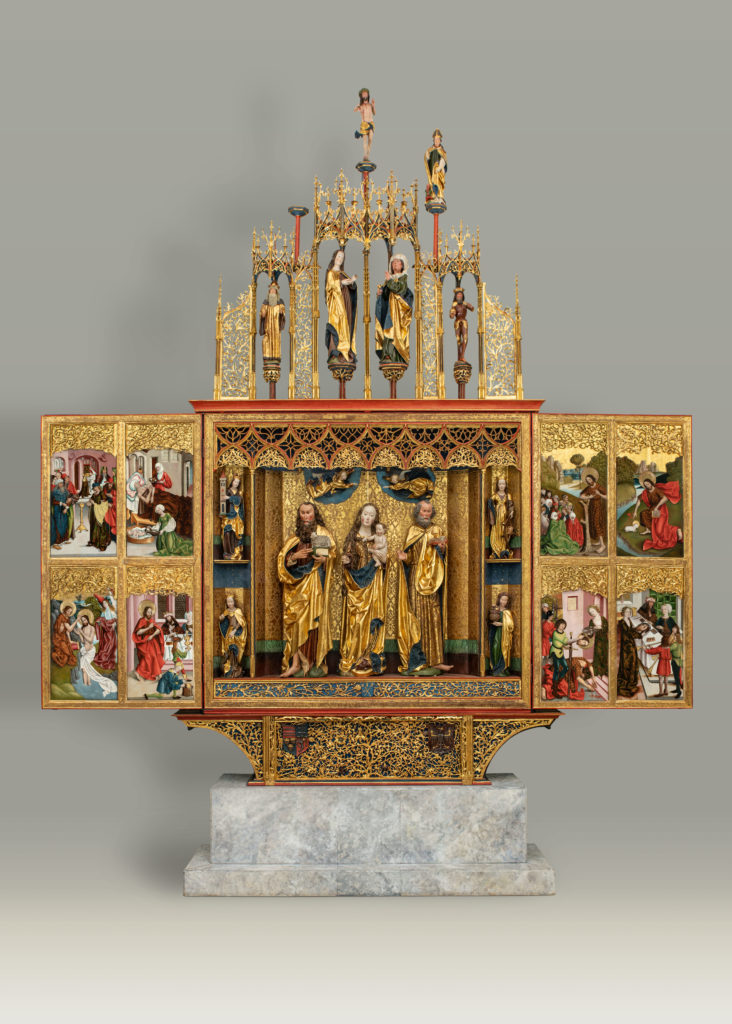
Saint John the Baptist. Statue from the shrine of the former high altarpiece of the Church of Saint John the Baptist in Kisszeben (today Sabinov, Slovakia)
Old Hungarian Collection
After many decades of restoration, the High Altar of Kisszeben can be seen again in its full splendour in the Hungarian National Gallery. The restoration of one of the largest and most ornate winged altars from the medieval period of the Kingdom of Hungary began in 1954 and was completed in the summer of 2020. The high altar is on view from 24 September at the Gallery’s exhibition titled Late Gothic Winged Altarpieces.
The high altar that suffered severe damage over the centuries first entered the museum’s holdings in the late nineteenth century. It was originally erected in the Saint John the Baptist Church in Kisszeben (today Sabinov, Slovakia), and together with its two most impressive side altars were transported to Budapest in 1896, the year of Hungary’s millennial celebrations, with the aim to preserve their “art historical value”. Initially exhibited in the Museum of Applied Arts, it was transferred to the Museum of Fine Arts in 1909 where it was on view; first, in the Romanesque Hall and from 1928 to 1944, in the Marble Hall. The altar was dismantled and taken to the museum’s basement for safekeeping in November 1944, during the bombings of Budapest.

The restoration of the damaged panels began in the museum in 1954 and continued in the 1960s. The disassembled pieces of the altar, still incomplete and in poor condition, were taken to the Hungarian National Gallery in 1973 when the Old Hungarian Collection moved there. Their restoration began in the storage of the institution in the late 1980s. By the end of the 1990s, most of the sculptures and panels had been restored. The restoration of the entire altar was only completed recently; the reassembly of the structural elements and the design of the supporting steel framework was the end of the lengthy process.
The winged altar, which was one of the largest and most ornate ones in the medieval Kingdom of Hungary, is dated to 1496 according to the inscription on the frame of the paintings, used for daily worship. The altar was “renovated” in the baroque period, i.e., the panels were overpainted. Three sculptures stand in the shrine: Virgin Mary in the middle, the namesake saint, Saint John the Baptist on her left, and Saint Peter Apostle on her right. A crown was originally held above Virgin Mary’s head by a pair of angels, hovering in the clouds. Following tradition, the side niches featured popular virgin martyrs.
A special feature of the altar is the gable richly decorated with turrets and foliage, which was once several storeys high but only survived in fragments; this piece was originally crowned with a crucifix on the steeple towering over the statue of the Man of Sorrows. The stunningly carved predella, exquisitely decorated with foliage, grapes and birds, was the most splendid element of the altarpiece ensemble. Both sides bear important heraldic motifs and coats of arms. The richly gilded feast-day side features eight episodes of the legend of Saint John the Baptist on large, delicately carved panels decorated with foliage motifs. The most special iconographic feature of the high altar – which is without precedent and analogies among Hungarian altars and even in its genre in general – is the series of images on the workday side. From left to right, the series depicts – one could say illustrates – the Apostles’ Creed in sixteen episodes, accurately following the text of the creed. This unique iconographic programme was presumably implemented at the request of the donor, who gave the commission for this altarpiece of outstanding quality and pomp.